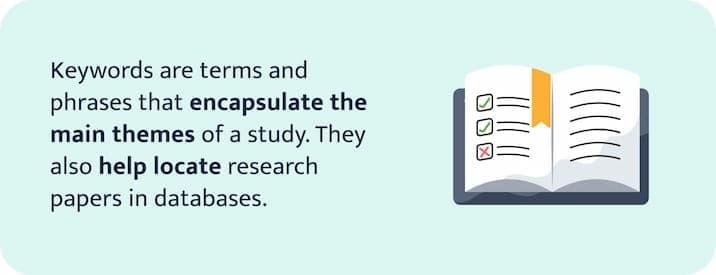UN International Day for Disaster Risk Reduction: Insight into the African Development Bank’s Initiative in The Gambia
As the world observes the UN International Day for Disaster Risk Reduction, a crucial focus on proactive measures to mitigate the impacts of natural disasters is more pertinent than ever, particularly in vulnerable regions like Africa. The African Development Bank (AfDB) has taken significant strides toward building resilience against such calamities through its Africa Disaster Risk Financing Programme. In The Gambia, this initiative aims to bolster the country’s capacity to manage and recover from the economic shocks inflicted by disasters. In this article, we explore five key aspects of the AfDB’s program that highlight its role in enhancing disaster preparedness and response in The Gambia, underscoring the urgent need for a comprehensive approach to disaster risk management in the face of an increasingly volatile climate.
UN International Day for Disaster Risk Reduction Highlights Importance of Resilience Building in The Gambia
The UN International Day for Disaster Risk Reduction emphasizes the critical need for resilient infrastructure and communities in The Gambia, which is increasingly affected by climate change and natural disasters. The African Development Bank’s Africa Disaster Risk Financing Programme aims to bolster the nation’s adaptive capacities by providing financial support and technical training focused on managing disaster risks effectively. This initiative highlights the significance of sustainable development, ensuring that local communities are equipped to withstand the impacts of disasters through proactive measures and engaging with stakeholders at all levels.
Key components of the programme include:
- Funding Mechanisms: Establishing a robust financial framework that allocates resources to disaster preparedness and response.
- Capacity Building: Providing training for local authorities and community organizations to enhance disaster risk management skills.
- Awareness Campaigns: Engaging the public through education and outreach about disaster preparedness and resilience strategies.
- Partnerships: Collaborating with international and local agencies to create a unified response to disaster risks.
- Data Analysis: Utilizing data-driven insights to inform decision-making and strengthen response capabilities.
| Area of Impact | Key Focus |
|---|---|
| Infrastructure | Reinforcing roads and bridges to withstand flooding. |
| Community Health | Implementing health measures to prevent disease outbreaks post-disaster. |
| Agriculture | Promoting resilient farming techniques to cope with erratic weather patterns. |
| Education | Integrating disaster risk management into school curriculums. |
Key Features of the Africa Disaster Risk Financing Programme: Enhancing Local Preparedness and Response
The Africa Disaster Risk Financing Programme is a transformative initiative that seeks to bolster local capacities in managing disaster risks and enhancing responsiveness during emergencies. One of its key features is the establishment of a rapid financing mechanism that allows countries to access necessary funds swiftly in the aftermath of a disaster. This mechanism not only alleviates immediate humanitarian needs but also supports early recovery efforts, allowing communities to bounce back more effectively. Furthermore, the programme emphasizes capacity building and training, equipping local stakeholders with the skills and knowledge required to implement effective disaster risk management strategies.
Another essential aspect of the programme is its focus on data-driven decision-making. By fostering the development of comprehensive risk assessments and early warning systems, the Africa Disaster Risk Financing Programme helps local governments identify vulnerabilities and prioritize interventions. This approach also promotes community engagement, encouraging local populations to participate in planning and preparedness activities. In addition, the programme establishes partnerships with various organizations to leverage expertise and resources, ensuring a collaborative approach to disaster risk financing and management. The synergy of these features aims to create resilient communities capable of withstanding and recovering from potential disasters.
Recommendations for Strengthening Disaster Risk Management in The Gambia Through Strategic Financing Initiatives
To enhance disaster risk management in The Gambia, it is critical to implement strategic financing initiatives that focus on sustainable resilience. Investing in infrastructure plays a pivotal role, as improved road networks and flood defenses reduce vulnerability to natural disasters. Additionally, building local capacity through community-based programs is essential for empowering citizens to adopt proactive measures for disaster preparedness. Stakeholders can collaborate to establish comprehensive training curricula that equip local leaders and community members with vital skills for managing crisis situations effectively.
Furthermore, innovative financing mechanisms should be explored, such as risk transfer instruments (insurance solutions) that enable better resilience against climate-related shocks. The establishment of a national disaster fund could provide readily accessible financial resources for rapid response efforts. Collaborative partnerships with non-governmental organizations, local governments, and the private sector can foster an integrated approach to disaster risk management. Utilizing technology for early warning systems is also an important step toward enhancing communication before a disaster strikes. These initiatives align with broader objectives of promoting sustainable development and ensuring that The Gambia is better prepared to face the challenges posed by environmental changes and disasters.
Concluding Remarks
As the world observes the UN International Day for Disaster Risk Reduction, the African Development Bank’s Africa Disaster Risk Financing Programme in The Gambia stands out as a vital initiative aimed at enhancing resilience against the increasing threat of disasters. By focusing on risk assessment, innovative financing solutions, community engagement, and government collaboration, this program not only safeguards livelihoods but also strengthens the nation’s capacity to respond effectively to future challenges. As The Gambia embarks on this transformative journey, the lessons learned could serve as a model for other nations on the continent, highlighting the critical importance of proactive planning and strategic partnerships in mitigating the impacts of climate-related disasters. The future is uncertain, but with robust frameworks in place, there is hope for a safer, more resilient Africa.

